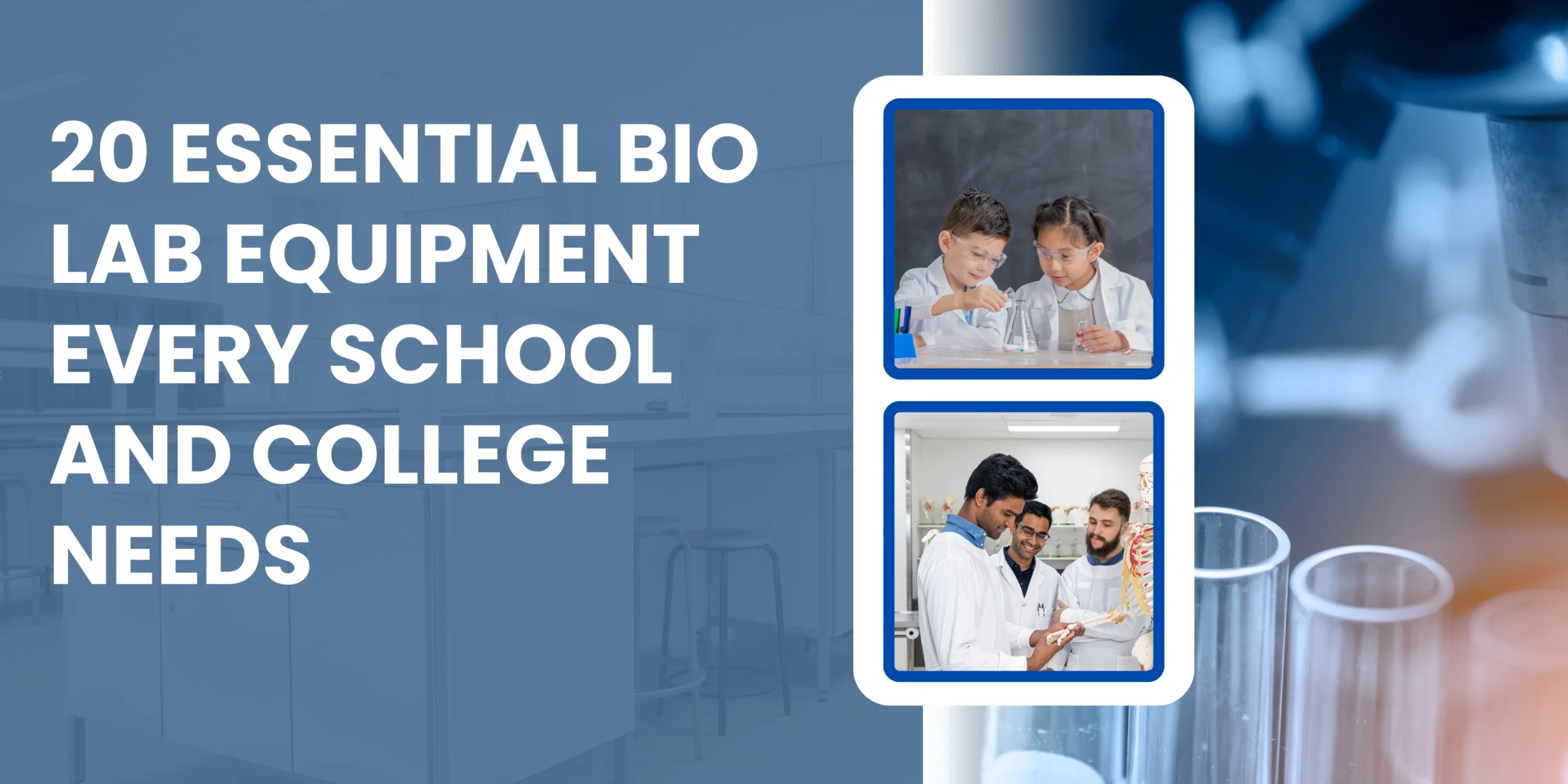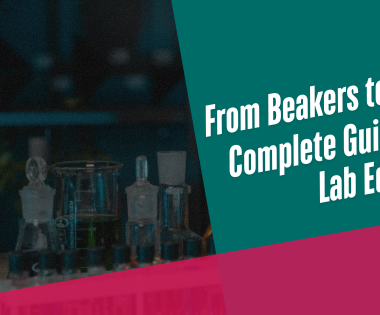The Ultimate Guide to 20 Essential Bio Lab Equipment for Schools and Colleges
Introduction
In biology laboratories, having the right equipment is crucial for conducting experiments, analyzing samples, and understanding scientific concepts. Schools and colleges must be eqipped with essential bio-lab tools to provide students with a hands-on learning experience. This article lists and explains the 20 most essential bio lab equipment every school and college needs.
Importance of Bio Lab Equipment in Education
Practical learning in biology labs enhances understanding and retention of scientific concepts. Proper lab equipment ensures accuracy, safety, and efficiency in experiments, allowing students to develop critical thinking and problem-solving skills.
Table: Essential Bio Lab Equipment and Their Purpose
| Equipment | Purpose |
|---|---|
| Microscope | Magnifies small objects for observation |
| Glass Slides & Cover Slips | Holds specimens for microscopic study |
| Petri Dishes | Used for culturing microorganisms |
| Test Tubes & Racks | Holds and mixes small liquid samples |
| Beakers & Flasks | Measures and holds liquids |
| Graduated Cylinders | Measures liquid volumes accurately |
| Pipettes & Droppers | Transfers small liquid volumes |
| Bunsen Burner | Provides heat for experiments |
| Centrifuge | Separates substances of different densities |
| Autoclave | Sterilizes lab equipment and media |
| Spectrophotometer | Measures light absorption of substances |
| pH Meter | Measures acidity/alkalinity of solutions |
| Incubator | Maintains optimal temperature for cultures |
| Hot Plate | Heats solutions evenly |
| Dissecting Kit | Used for specimen dissection |
| Electrophoresis Apparatus | Separates DNA, RNA, or proteins |
| Microtome | Cuts thin tissue sections for slides |
| Analytical Balance | Measures small mass with precision |
| Laminar Flow Hood | Provides a sterile workspace |
| Safety Equipment | Ensures lab safety for students |
Detailed Explanation of Each Equipment
1. Microscope
Uses: Essential for observing bacteria, cells, and microorganisms.
Experiment: Observing onion peel cells to study plant cell structure.
2. Glass Slides and Cover Slips
Uses: Holds specimens for microscopic observation.
Experiment: Mounting cheek cells for microscopic examination.
3. Petri Dishes
Uses: Culturing bacteria and fungi.
Experiment: Growing bacterial colonies to study their morphology.
4. Test Tubes and Racks
Uses: Holding, mixing, and heating small liquid samples.
Experiment: Performing simple chemical reactions like pH tests.
5. Beakers and Flasks
Uses: Holding, mixing, and heating solutions.
Experiment: Preparing buffer solutions for biochemical tests.
6. Graduated Cylinders
Uses: Measuring liquid volumes accurately.
Experiment: Determining the density of a liquid by volume and mass.
7. Pipettes and Droppers
Uses: Transferring precise liquid volumes.
Experiment: Measuring enzyme activity in biochemical reactions.
8. Bunsen Burner
Uses: Provides heat for sterilization and experiments.
Experiment: Flame sterilization of inoculating loops.
9. Centrifuge
Uses: Separates substances of different densities.
Experiment: Separating blood components.
10. Autoclave
Uses: Sterilizing lab equipment and media.
Experiment: Sterilizing agar plates before bacterial culture.
11. Spectrophotometer
Uses: Measures light absorption in solutions.
Experiment: Measuring DNA concentration.
12. pH Meter
Uses: Measures pH of solutions.
Experiment: Measuring pH of buffer solutions in experiments.
13. Incubator
Uses: Provides a controlled environment for growing cultures.
Experiment: Incubating bacterial cultures at optimal temperatures.
14. Hot Plate
Uses: Heating solutions evenly.
Experiment: Boiling water to prepare culture media.
15. Dissecting Kit
Uses: Dissecting biological specimens.
Experiment: Frog dissection to study anatomy.
16. Electrophoresis Apparatus
Uses: Separates DNA, RNA, or proteins.
Experiment: DNA fingerprinting in genetics studies.
17. Microtome
Uses: Slices thin sections of tissue for microscopic study.
Experiment: Cutting tissue sections for histology slides.
18. Analytical Balance
Uses: Measures small masses accurately.
Experiment: Weighing chemicals for precise solution preparation.
19. Laminar Flow Hood
Uses: Maintains a sterile environment for microbiological work.
Experiment: Culturing bacteria without contamination.
20. Safety Equipment
Uses: Protects users from hazards.
Experiment: Essential for all lab activities to ensure safety.
Conclusion
A well-eqipped biology lab enhances learning and allows students to perform experiments efficiently. The 20 essential pieces of equipment listed above are fundamental in schools and colleges for practical education in biological sciences.
FAQs
- Why is a microscope essential in a biology lab?
A microscope helps students observe microorganisms and cell structures, making it a crucial tool for biology experiments. - What safety equipment is necessary in a bio lab?
Safety equipment includes gloves, goggles, lab coats, and fume hoods to protect students from hazardous substances. - How does an autoclave work?
An autoclave uses high-pressure steam to sterilize lab equipment and media, preventing contamination. - What is the purpose of a spectrophotometer?
It measures the absorption of light by substances, which helps in analyzing biochemical compounds. - Why is a centrifuge used in biology experiments?
A centrifuge separates components in a mixture based on density, such as separating blood cells from plasma.
Ensure your lab is fully equipped for hands-on learning! Explore these essential bio-lab tools and enhance scientific education today. Explore our product ranges today! Chemicals, Plasticware, Glassware, Slides, Instruments, Consumables, Equipment, Model, Charts





